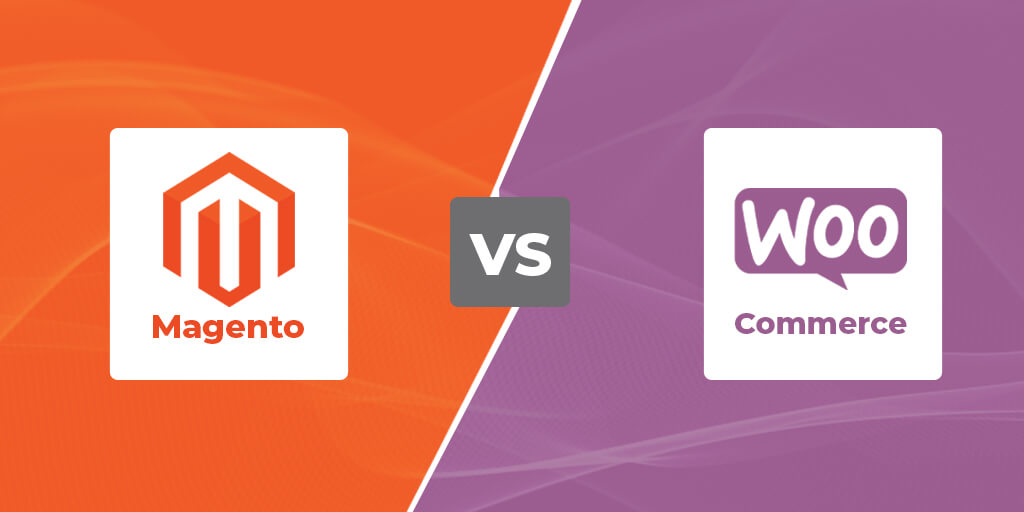
WooCommerce Vs Magento
If you want to sell things online, you might be confused about choosing between Magento and WooCommerce. Both platforms are powerful, popular, and feature-packed, and they’re both good options, but it can be hard to pick the right one. In this article, we will explore Magento vs. WooCommerce and their important factors.
What to Look For in an eCommerce Platform?
If someone is starting an online store, the following are the factors to be considered when choosing an eCommerce platform.
Reliability
Any online store owner’s major concern is trust. They want to ensure their data stays safe on their chosen platform. Sometimes, with managed eCommerce platforms, users lose their data because they forgot to renew or upgrade their subscriptions. So, the first thing to consider when choosing an eCommerce platform is ensuring the store’s data stays safe and protected.
Performance
Any eCommerce store owner needs to focus on their store’s performance. Everything else depends on how smoothly the store operates. Your store should be fast-loading. If it takes longer than 5 seconds to load, you should optimize your store for performance.
Scalability
Imagine if your store suddenly gets 300% more visitors during the holiday season. As a store owner, you can’t avoid the issue of scalability unless you’re using a cloud eCommerce hosting platform that can instantly adjust to handle the increased demand for your store’s resources. Ensure your store’s infrastructure and hosting solution are ready for the challenge.
Ease of Use
Navigating through all the options on the dashboard can be confusing. Ensure that all the buttons and switches are easy to understand. And that’s just the back end. At the front end, Ensure that the themes are attractive and eye-appealing for the customer, ultimately increasing sales.
Customizations
Sooner or later, you may want to customize your store while launching it, or it could be a couple of years later. If your eCommerce platform doesn’t support customization options, you’ll likely start to dislike your platform, which could negatively affect your business.
Payment Methods
Selecting the right payment methods for your eCommerce store is a simple process. First, identify your target audience’s preferred payment methods. Then, choose an eCommerce platform that supports those payment methods.
Cost
The cost of using an eCommerce platform is an important part of your business expenses. So, finding the right balance between platform features and cost is crucial. List the features you need and then choose the platform that offers them at the best price.
Security
Security is the priority for any eCommerce store. Ensuring that the eCommerce platform you chose has no known vulnerabilities is essential. Check official blogs for announcements and updates regarding the enhancement of security measures. You can measure the platform security by checking for simple indicators like SSL certificates, PCI-DSS compliance, and the implementation of two-factor authentication for all logins.
Magento vs WooCommerce – Overview
Magento and WooCommerce are the most popular self-hosted eCommerce platforms. Each has its own pros and cons. But before we discuss the details, let’s examine what each platform offers.
WooCommerce
WooCommerce is a robust plugin designed for the WordPress platform. It provides all the necessary features for an eCommerce solution and its parent platform’s user-friendly nature.
Pros:
- It comes with customizing tools similar to WordPress.
- Offers in-depth documentation and tutorials for the users.
- Provides multiple payment options.
- Integrates seamlessly with Google Analytics, allowing for advanced reporting capabilities.
Cons:
- You need to find out your own web hosting.
- Additional fees can be high.
Magento
Magento, also known as Adobe Commerce, is an eCommerce platform for web development professionals and medium to large online stores. It provides one of the most wide range of features in the industry, making it an ideal choice for stores with high goals.
Pros:
- Effectively manages large orders, products, and customers.
- Multi-channel selling can be made easy with one dashboard
- An unlimited number of products, such as simple, configurable, and more, can be supported.
Cons:
- Technical knowledge is required to set up the platform.
- Customization in this platform is a time-consuming process.
Difference Between Magento and WooCommerce
Let’s delve deeper and compare Magento with WooCommerce in key aspects.
Payment Gateways
Offering convenient payment options is crucial to enhancing the purchasing experience. Magento and WooCommerce provide a good selection of payment gateways.
WooCommerce has built-in support for PayPal, Stripe, checks, offline and bank transfers, and cash options. It also offers extensions for additional gateways like Amazon Pay, Square, Google Pay, and Alipay. On the other hand, Magento supports PayPal, Authorize.net, and Braintree right out of the box. There are also extensions available for Stripe, 2Checkout, Skrill, Google Checkout, and more. The platform offers built-in support for major payment gateways and various add-ons for additional options.
Ease of Use
Ease of use is important when choosing an eCommerce platform, especially for beginners. In this aspect, WooCommerce is a preferred option. Magento is made for developers with technical expertise, which is less user-friendly for beginners and regular users. It requires technical knowledge of basic coding and technical terms, making it a more complex platform. In contrast, WooCommerce is more user-friendly, especially for WordPress users. Adding it to your site is as simple as adding plugins to your WordPress.
While Magento has a user-friendly dashboard and intuitive navigation, the setup and configuration process is difficult. Additionally, changing from WordPress to Magento can be challenging for those familiar with the previous platform.
Performance
Loading time is a major consideration for any website, especially for eCommerce sites. If your website takes too long to load or feels sluggish, you risk losing potential customers and revenue. Regarding performance, judging an overall winner between both platforms isn’t easy. Regardless of the platform used, each online store will perform differently depending on its functionality and size. Additionally, web hosting, the use of Content Delivery Network (CDN), and image optimization play important roles in website speed and performance.
So, the performance of your online store will largely depend on you, your choice of hosting provider, and other optimization strategies you choose.
Security
Security is paramount for eCommerce platforms, as customers expect their private and payment details to be protected. While both WooCommerce and Magento offer ways to improve security, you must implement advanced security measures.
Magento stands out by providing dedicated security patches to its users. However, applying these patches can be challenging for eCommerce beginners, leading to many outdated Magento stores. If you prioritize security and have experience with web development or are willing to hire professional assistance, Magento can be considered the preferred choice. However, no platform can guarantee 100% security, and you should be cautious about protecting your online store and customer data.
Scalability
Regarding scalability, Magento, particularly the paid version, emerges as a strong contender. Like WooCommerce, the enterprise version of Magento can easily handle thousands of orders. Both platforms support an unlimited number of products.
However, regardless of the platform you select, it’s crucial to ensure that you choose better eCommerce hosting capable of managing sudden traffic increases.
Marketing and SEO
When comparing Magento and WooCommerce, it’s essential to consider each platform’s marketing and SEO features. WooCommerce, built on a CMS initially intended for blogging, has features and functionality suitable for content marketing campaigns. It can also be paired with various marketing and SEO plugins, such as Yoast SEO, to further optimize content.
On the other hand, Magento doesn’t have built-in blogging functionality by default, so an extension is required for such features. However, like WooCommerce, Magento supports integration with numerous add-ons and marketing tools, including Google Analytics, to enhance site optimization and marketing efforts. Magento also offers advanced marketing tools in its Pro version. Ultimately, the choice of platform depends on your marketing and SEO requirements.
Support
Both Magento and WooCommerce are popular e-commerce platforms with large and supportive communities. This means that users can easily find resources and answers to their questions online. WooCommerce provides a public knowledge panel that includes tutorials and guides. However, if you require direct support beyond this, you will typically need to pay for extensions.
With Magento’s free version, you can find help online through community forums and resources. A Magento Commerce plan only offers developer support through email, phone, or ticketing systems. If more complex issues arise, Hiring a developer is advised.
Product Management
If you prioritize good product management in your eCommerce store, WooCommerce and Magento offer different approaches. WooCommerce provides a straightforward method for managing products suitable for both physical and digital items. Setting up new products is easy, especially for those familiar with WordPress.
On the other hand, Magento offers advanced features that WooCommerce doesn’t. These include support for wish lists, grouped items, advanced pricing rules, product reviews, and personalization of products. However, utilizing these features often requires purchasing additional extensions and technical knowledge.
Extensibility
Magento offers amazing features, including multi-language options, complex configurable products, and multi-store capabilities. WooCommerce doesn’t have many features compared to Magento, but both of them have extendable themes, add-ons, and plugins.
Magento and WooCommerce both provide several extensions, both free and paid. However, we only have to consider the affordability of premium add-ons. WooCommerce add-ons are more affordable than Magento’s. However, they are more complex and challenging to use in Magento. It is easier to install and set up plugins in WooCommerce than Magento, which requires technical skills.
Pricing
When comparing platforms like Magento and WooCommerce, cost is the most common and major factor in your decision-making process. Both platforms are open-source, allowing you to download and use them for free. However, the initial free download doesn’t include customization or long-term expenses. You need to buy themes and plugins to customize your store’s appearance and functionality according to your needs.
The costs of these platforms can differ depending on which extensions you purchase. You’ll also need to consider the costs of purchasing a domain and hosting plan with both Magento and WooCommerce. However, WooCommerce will be less expensive overall compared to Magento.
Conclusion
Choosing between WooCommerce and Magento wasn’t straightforward, as each platform has its strengths and weaknesses. Performance, security, product management, and budget should all be considered alongside your specific requirements. If you seek expert guidance and assistance in WooCommerce development services, consider partnering with Ayatas Technologies. Our team is dedicated to crafting tailored solutions that align with your business goals and needs. Contact us today to unlock the full potential of your online presence.



